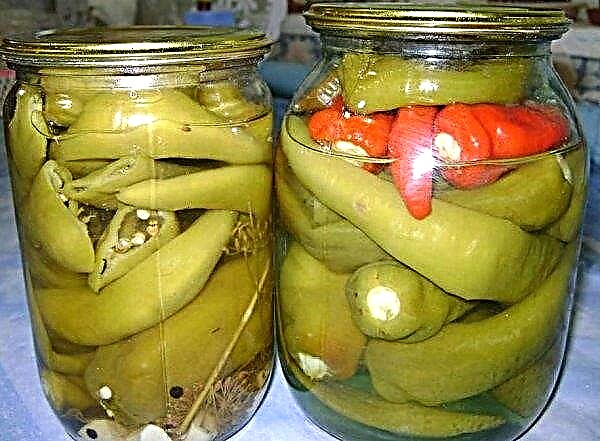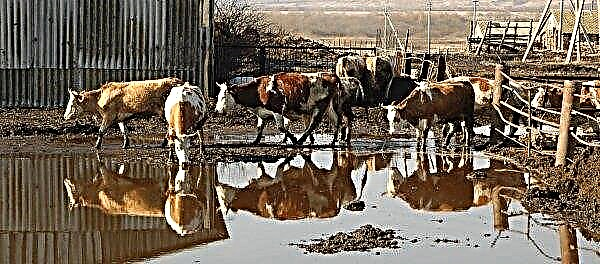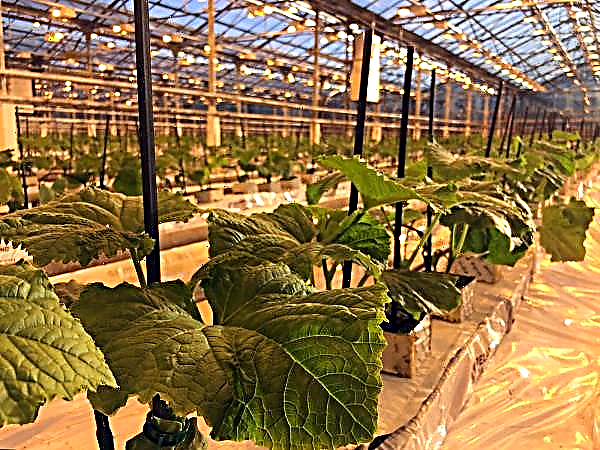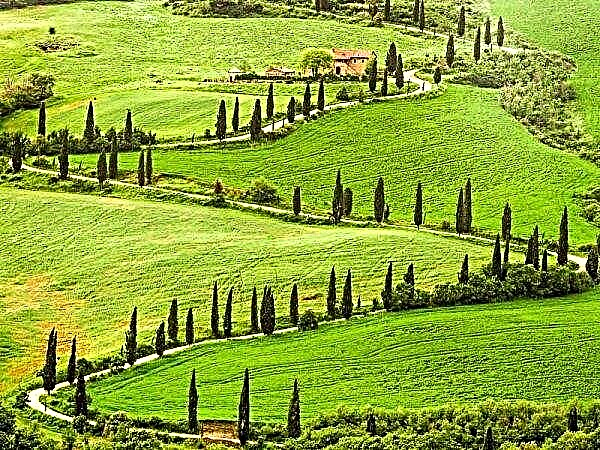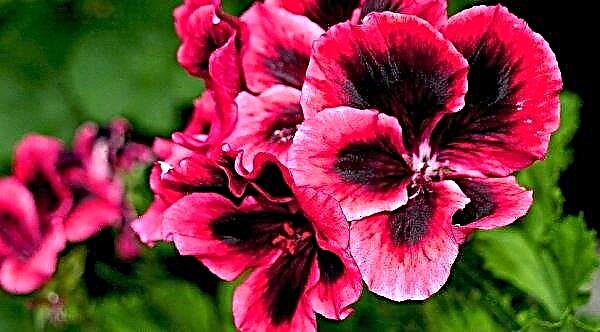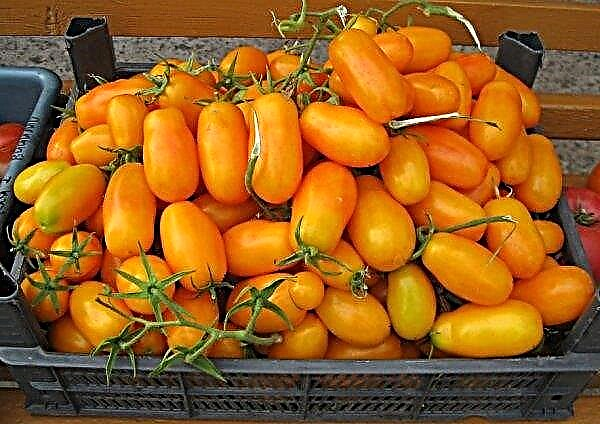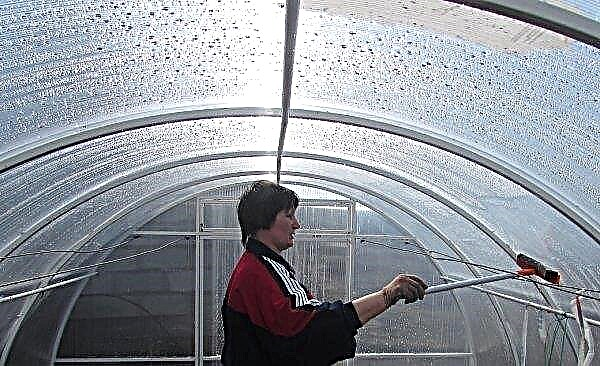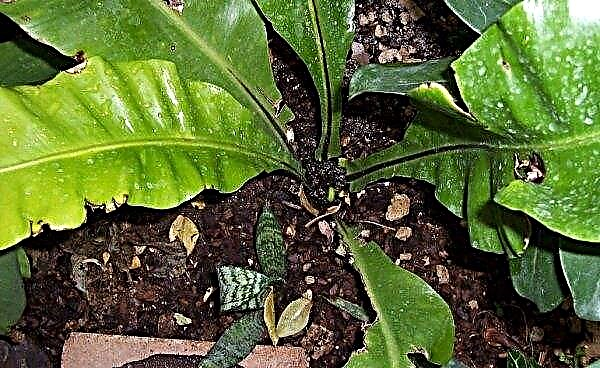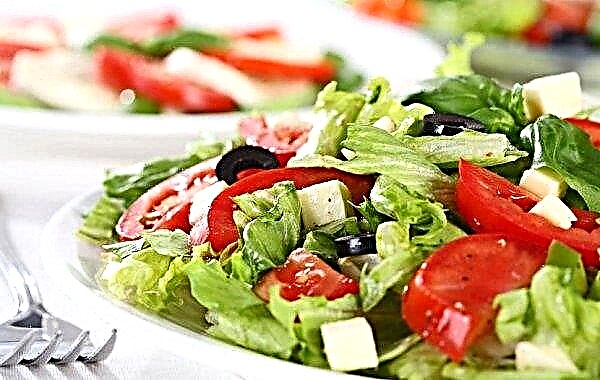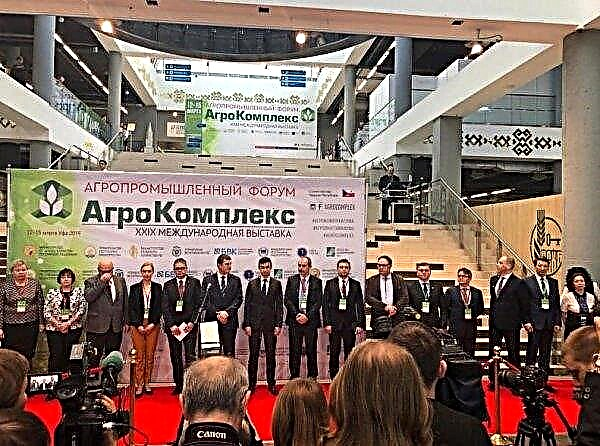If you are in search of tomato varieties for cultivation in a summer cottage, we recommend that you familiarize yourself with the main characteristics of Dubok tomato varieties. They are compact, unpretentious in leaving, grow quickly and give plentiful harvests.
Grade description
Tomatoes Dubok bred by Russian breeders and have the following characteristics:
- early ripening - the first fruits can be expected after 85-105 days after sowing seeds;
- bushes are undersized and determinant - reach a height of 40-60 cm;
- the crown of the bush is compact, the shoots do not grow much;
- leaves are medium in size, light green in color, slightly corrugated;
- the first inflorescence is formed over the 6-7 leaf, all the rest - through the leaf;
- 5-6 tomatoes are tied in each brush;
- tomato brings roundish fruits, slightly flattened on the sides;
- fruit color is red;
- the average weight of the fruit is 50-100 g;
- high yield of the variety - 6–7 kg per 1 sq. km. m;
- flesh is fleshy, dense, sweet with sourness;
- fruits contain an average amount of solids (up to 6%), few chambers and a small amount of seeds;
- Tomatoes practically do not deteriorate during transportation, can be stored for a long time;
- Tomatoes are characterized by high resistance to major diseases, in particular, to late blight;
- the use of fruits is universal - they can be used fresh, pickled, go to juice, sauces;
- these plants need standard agricultural practices;
- can be grown in open ground, in a greenhouse, in a greenhouse, under a film, in apartment conditions.
Important! When growing Dubok tomatoes at home, artificial pollination of flowers will be required.
- Variety Dubok has the following advantages:
- high level of productivity;
- unpretentiousness to leaving and conditions when growing;
- resistance to low temperatures;
- synchronism in ripening;
- good storage and transportability;
- universality of application;
- high palatability of fruits;
- friendly ripening of fruits.
How to grow tomato seedlings yourself
For planting tomatoes of the Dubok variety, only the seedling method is used. Sowing seeds directly into the open ground is not suitable for this variety. Seedlings can be purchased ready-made or grown independently from seeds.
Optimum timing for sowing
Usually sowing seeds is carried out in March. The deadline is the beginning of April. If you adhere to these terms, then a transplant to a permanent place will have to be done in May-June.
Did you know? The greatest amount of nutrients during long-term storage is stored in dried tomatoes. However, to obtain 1 kg of dried product, 8-14 kg of fresh tomatoes are needed. When dried, tomatoes lose up to 93% of their weight.
The soil
The substrate for growing seedlings can be bought in a store or made independently. For this, the following components are taken:
- peat (2 parts);
- garden land (1 part);
- humus or compost (1 part);
- sand (0.5 parts).
Soil prepared by one’s own hands will need to be decontaminated - it is treated with a weak potassium permanganate solution, the Fitosporin preparation or calcined in an oven (microwave) at a temperature of + 70–90 ° C. Before sowing the seeds, the soil is irrigated. After moisturizing, it is placed in room conditions for 24 hours.
Capacity for growing
Prepared soil must be placed in a container for planting seeds. It can be one big box or separate cups from plastic or peat compost. When grown in separate containers, plants grow stronger. It is necessary to select containers with a depth of at least 10 cm.
Seed preparation
Before placing the seeds in the soil, they should be decontaminated - apply treatment with a weak solution of potassium permanganate. In order to sprout seeds faster, they are treated with growth stimulants - Fitosporin, Epin, Zircon, Heteroauxin, Kornevin, Biostim, Radifarm. Immediately before planting, they are washed with water.
Sowing seeds
If the seeds are sown in a common container, then grooves of 0.5 cm depth are prepared for them at a distance of 2 cm from each other. 2-3 seeds are placed in the grooves at intervals of 1.5 cm. From above they are sprinkled with soil with a layer of 4 mm. The container with seeds is covered with a film or glass.
Seedling Care
Seedlings must be placed in a warm and bright place. If the temperature is kept above +22 ° C, the first sprouts will appear a week later. At first, seedlings will be treated with daily airing and periodic moistening. After germination, the film or glass is removed from the container.
Once the plants have given 1 or 2 true leaves, they need to be planted in different pots with peat. Further care will include regular moisturizing, spraying and hardening. At this stage, the temperature in the room where the seedlings are grown should be + 18–20 ° С in the daytime and + 12–15 ° С in the night.
When the fifth leaf appears, the sprouts are watered every 3-4 days. Daylight hours at this time are maintained at 14-16 hours.Did you know? In Spain, in the town of Bunyol, in honor of the end of summer, the annual international festival La Tomatina is held, in the framework of which two-hour tomato battles are held. During the event, about 100 tons of tomatoes are consumed. After they are carried out, firefighters from the water cannons are cleaning the streets.
During development, the sprouts can be fertilized 2-3 times with mineral additives - Kemira Plus, Agricola, etc.
Seedling hardening
Hardening procedures must be started a week before the sprouts are planted in the ground or in the greenhouse. Initially, the sprouts are taken out to fresh air for 5-10 minutes. Then every day, the time spent on the street is increased, bringing to 40-60 minutes. Hardening allows you to strengthen the immune system of plants, instill resistance to adverse conditions, diseases and insect parasites.
Planting seedlings in a permanent place
Seedlings of Dubok tomatoes are planted in soil or in a greenhouse at the age of 55–65 days. If the optimum time for sowing seeds has been observed, then planting will take place in May-June. Recommended planting patterns - 70x50 cm, 60x40 cm. For 1 square. m of open ground should accommodate 5-6 bushes, in greenhouse conditions - 4-5 plants. After placing the sprouts in the soil under each bush, pour 1.5-2 l of water. When planting in open ground, the first time it will be necessary to cover the seedlings with a film. Young shoots must also be insulated if air temperatures fall below +17 ° C.
Important! The best predecessors for growing tomatoes are cucumbers, cabbage, legumes, onions, carrots, lettuce.
How to care in the open ground
Care for tomatoes Dubok implies standard agricultural technology. The garden plant will need to be regularly watered, fed with fertilizers, weed and loosen the soil.
Watering
After the first watering, during planting at a constant place, the next time the plants are watered 10-12 days later. Before flowering starts, 1 sq. m will require 4 liters of water. During flowering and the formation of ovaries - up to 12 liters.
Tomatoes do not tolerate bays - they begin to suffer from diseases caused by fungi, the fruits crack, become watery. With insufficient watering, the ovaries are showered and small fruits are formed.
Watering of tomato bushes is carried out only with warm water - not colder than +20 ° С. It needs to be defended or collected after rainfall. Tomatoes are watered 1-2 times every 7 days. The best time to moisturize is in the evening, after the sun hides.
When watering, it is necessary to ensure that moisture does not fall on the foliage and stems. Tomatoes can be watered manually - using a hose (under the root, excluding moisture from plants) and a drip subsoil method.
Important! You can find out if tomatoes are watered enough by squeezing a lump of earth in the palm of your hand, allocated from a depth of 10 cm. A well-molded and decaying lump indicates sufficient moisture.
The most optimal method of watering for tomatoes is drip. It can be done by installing plastic bottles in which large and small holes have been pre-made and the bottom cut. Such bottles are placed in holes 10–15 cm deep at a distance of 15–20 cm from the stem at an inclination of 30–40 degrees and are buried in the ground. The liquid poured into the bottles gradually leaves the soil and saturates the roots with moisture. Using these bottles is also convenient to apply fertilizer.
Top dressing
Fertilizing tomatoes is produced according to the following scheme:
- 2 weeks after planting.
- After 10 days.
- In 2 weeks.
- After 20 days.
Also, tomatoes can be fed with yeast.
Root top dressing alternate with foliar. After the ovaries are formed, fertilizing is carried out only at the root.
Stepson
For Dubok tomato bushes, the herding procedure is optional. It is necessary to produce it or not, the summer resident decides. Experts say that it is advisable to conduct stepsoning, since in this case it is possible to achieve better productivity.
If a decision is made to carry out the procedure, then the side shoots are removed 1-2 times a week. They are cut off with hands or cut off with scissors, leaving “stumps” of 5 cm each. As a result, a maximum of 2-3 stems must be left.
Soil care
Soil care consists in weeding and loosening. Weed removal is carried out as necessary. Loosening - after each watering and precipitation. It is also advisable to mulch, which eliminates the growth of weeds and retains the necessary moisture. For mulching use mowed grass, peat or straw.
Bush tying
Since the bushes at Dubka are low, they do not need to be tied. They are able to independently cope with the load that occurs during fruiting.
Preventative treatment
The variety is resistant to late blight, bacterial spotting and verticillosis. The main prevention is to comply with the recommendations for planting and care, especially the regime of irrigation and top dressing. To prevent the invasion of pests using mixed plantings. So, in the immediate vicinity of tomatoes, in the aisles, you need to plant marigold, marigold, lupine, mustard, oil radish. Their smell will scare away harmful insects.
It is possible to safely process tomatoes for the prevention of late blight with the help of iodine.
Harvesting
The fruiting phase in Dubok tomatoes lasts about 2-3 weeks. To harvest, go to the garden early in the morning. Harvest the fruits as they ripen.
If you plan to transport them, then you need to remove the tomatoes at the time of technical maturity, that is, only browned. They are placed in boxes and sent to a room with a temperature of + 18–25 ° С and a humidity of 80–85%, where they successfully ripen.  If you do not allow full ripening of the fruits on the bushes, then the yield will be higher, since it will be possible to save nutrients for the ripening of the following tomatoes. For long-term storage, the most dense, large and healthy tomatoes are selected. Fruits can be stored for a long time at a temperature of + 11–13 ° С and humidity of 85–90%.
If you do not allow full ripening of the fruits on the bushes, then the yield will be higher, since it will be possible to save nutrients for the ripening of the following tomatoes. For long-term storage, the most dense, large and healthy tomatoes are selected. Fruits can be stored for a long time at a temperature of + 11–13 ° С and humidity of 85–90%.
So, tomatoes of the Dubok variety are distinguished by high productivity, frost resistance, disease resistance, high palatability of fruits, unpretentiousness and excellent transportability. Since the variety is determinant, it does not need to be tied up and stepsoned.

